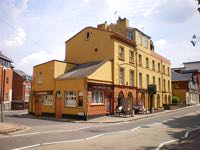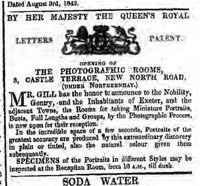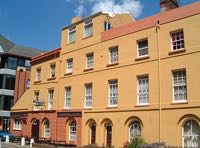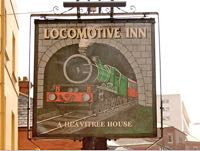
 Locomotive Inn, New North Road
Locomotive Inn, New North Road
Page updated 16th April 2018
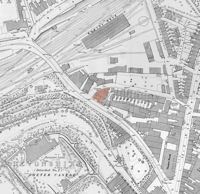 Situated in New North Road, about a 100m from
Exeter Prison and opposite the east entrance to Central Station, the
Locomotive Inn has an important part in
Exeter's history. The first train on the London and South Western line
reached Exeter on 19th July 1860, after a five hour journey from
Waterloo Station, London. A station below
Northernhay Park was built for the new line and named Queen Street
Station. The railway then descended a 1 in 37 gradient to St David's
Station, which was run by their rival
broad gauge company, Great Western Railways.
Situated in New North Road, about a 100m from
Exeter Prison and opposite the east entrance to Central Station, the
Locomotive Inn has an important part in
Exeter's history. The first train on the London and South Western line
reached Exeter on 19th July 1860, after a five hour journey from
Waterloo Station, London. A station below
Northernhay Park was built for the new line and named Queen Street
Station. The railway then descended a 1 in 37 gradient to St David's
Station, which was run by their rival
broad gauge company, Great Western Railways.
The Locomotive Inn was originally called the South Western Hotel when it occupied, in 1862, part of two of the four, three storey, terrace buildings that were constructed in 1839. The first owner was John Jury, who had been residing in the building since it was built. The hotel had sixteen rooms, of which, eight were bedrooms. He was still in charge in 1871 when it was listed as the South West Hotel.
In 1875, the much grander Rougemont Hotel was opened as the then, new South Western Hotel. By 1897, the pub was already called the Locomotive Inn with John James as the landlord. During the 1950's a popular retired Exeter City football player, Angus Mackay ran the pub and attracted many football fans. It was one of Exeter's last cider only pubs during the 1950s - such was the quantity of cider drunk on the premises, that the vats had to be stored behind, in Longbrook Terrace.
Exeter's first photographic studio
The Locomotive Inn is not only noted for its history relative to the railways, but it housed the first photographic studio in Exeter. Part of the roof of the inn has an extra storey - this was added in 1842, when Mr William Gill opened the first photographic studio in Exeter. He obtained a licence from the sole UK patentee of the Daguerre photographic process, to trade in Exeter from Richard Beard. Daguerre, the French inventor of the process had sold Beard the UK rights for the process in July 1841, for £150. The first photographic studio to be licensed was in Plymouth, which opened on 31st July 1841. Beard made in excess of £6,000 from twenty local licences around the UK, including Gill's, in just one year.
Daguerreotypes, as they were known, were made onto a silver-plated sheet of copper which had been made light sensitive. The first daguerreotypes needed an exposure of up to twenty minutes in strong sunlight - within a couple of years this had been reduced to two minutes, although the subject often had to use headrests and arm supports to prevent blurring. The resultant photograph had to be housed in an airtight box with a glass aperture to view, as air would tarnish the silver surface. Because the photo was on a silver-plate, it was extremely detailed and sharp.
Gill traded until 1853, from the roof studio, when he closed as new rival photographic processes were proving to be more popular. On 4th January 1855 an advert appeared in a local paper:
"Collodian Photographs, beautifully coloured at 'Beards Photographic Institution' at New North Road, Exeter. Apparatus and chemicals supplied of the best quality."
The studio was again in use as a photographers, this time utilising Archer's wet collodian process, which used a glass negative system, allowing paper prints to be made. The studio appears to have closed in 1857, and the premises became residential.
Source - mostly based on research undertaken by Steve Coombes, The Birth of Photography by Brian Coe and The Camera, Time Life.
│ Top of Page │

